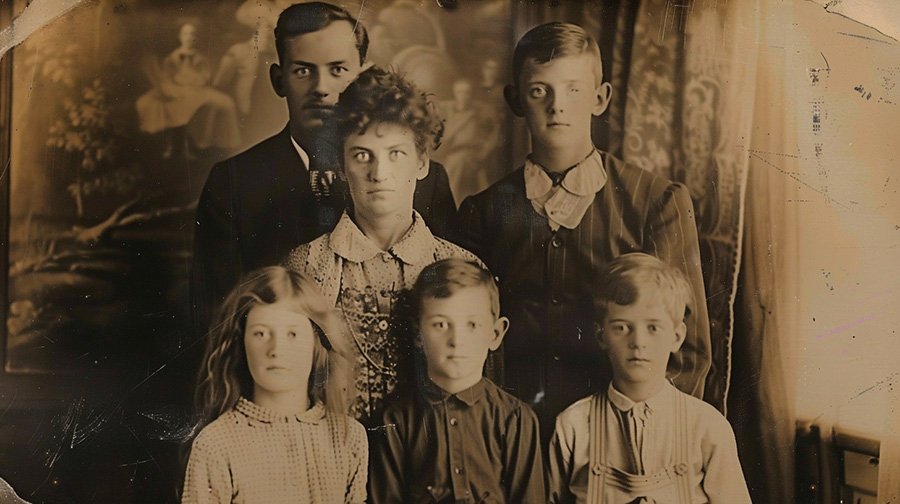Each picture tells a story, but these creepy photos have darker secrets… We’re talking chilling, we’re talking mysterious, we’re talking downright spooky. From haunted faces to landscapes that whisper tales of dread, these images hold secrets begging to be uncovered. Brace yourself for a deep dive into history’s dark side, where every snapshot has a tale to tell, and every tale will leave you looking over your shoulder. Ready to uncover the truth? Let’s unravel these mysteries together!
The Trophy Heads Of The Māori: A Glimpse Into The Past
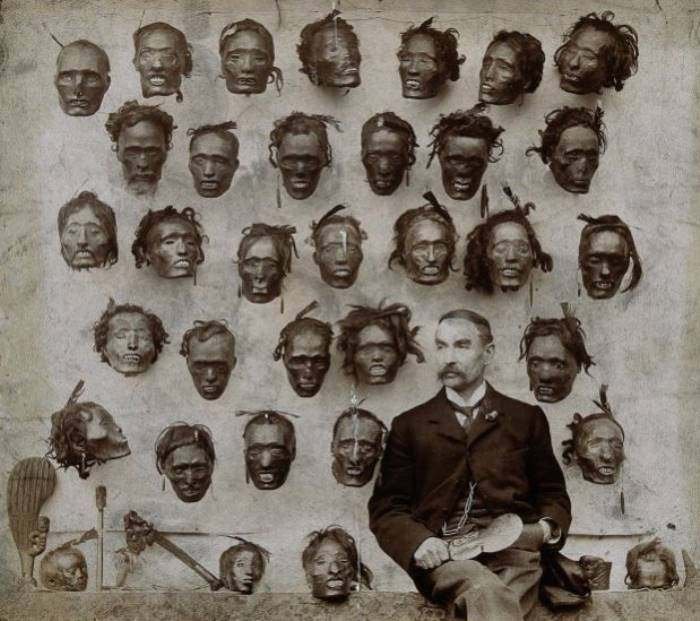
Before European colonizers arrived, the Māori people of New Zealand practiced preserving the heads of their deceased, known as mokomokai. This tradition involved a detailed process, including the removal of the brain and eyes, boiling, smoking, drying in the sun, and treating with shark oil. These preserved heads, often belonging to high-ranking individuals or enemy chiefs, served as symbols of honor, war trophies, and played a crucial role in diplomatic negotiations. Sir Joseph Banks’ fascination with mokomokai initiated European interest, leading to a trade that fueled the Musket Wars. Mokomokai were exchanged for muskets, causing social destabilization in the region.
Major General Horatio Gordon Robley, a British officer fascinated by tattooing, collected 35 to 40 mokomokai during the New Zealand Wars of the 1860s. His offer to sell them to the New Zealand Government was declined. Most of the collection ended up in the American Museum of Natural History, with a significant portion repatriated to Te Papa Tongarewa in 2014. This ongoing effort reflects a campaign to return mokomokai to New Zealand, emphasizing the importance of respecting and preserving Māori cultural heritage in light of historical commodification.
The Gruesome Discovery in Nizhny Novgorod
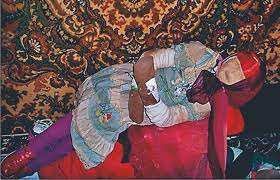
Anatoly Moskvin, a Russian former linguist, philologist, and historian, was arrested in 2011 after the mummified bodies of twenty-six girls and women, aged between 3 and 29, were discovered in his apartment in Nizhny Novgorod. Moskvin, who exhumed the bodies from local cemeteries, mummified them himself before dressing and posing them around his home. His parents, with whom he shared the apartment, mistook these mummified corpses for large dolls.
Moskvin’s fascination with the dead began in childhood, following a traumatic incident at a funeral procession. He became well-known in academic circles for his work, particularly in Celtic history and folklore, as well as languages and linguistics. Moskvin led a secluded life, never marrying or dating, and abstained from alcohol and smoking. His arrest revealed a macabre obsession with the dead, as he believed he could bring the children back to life through science or black magic. Moskvin was found to have paranoid schizophrenia and was deemed unfit for trial, sentenced to psychiatric care instead of prison. His case, described as exceptional and unparalleled in modern forensics, highlights a chilling intersection of academic brilliance and profound mental illness.
A Battle Between Faith and Illness: The Tragic Story of Anneliese Michel
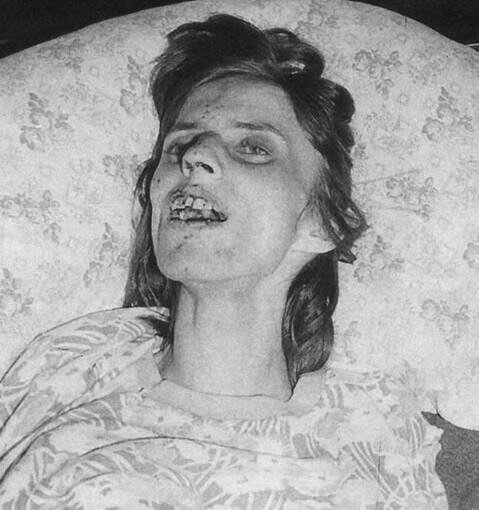
Anneliese Michel, a German woman born on September 21, 1952, underwent 67 Catholic exorcism rites in the year before her tragic death on July 1, 1976, due to malnutrition and dehydration. Diagnosed with epileptic psychosis (temporal lobe epilepsy) and depression, Michel’s condition deteriorated despite medical treatment, leading her and her family to believe she was possessed by a demon. This belief prompted the family to seek the Catholic Church’s help for an exorcism. After initially being rejected, two priests eventually received permission from the local bishop in 1975 to conduct exorcism sessions. Michel’s health worsened as she refused food, ultimately leading to her death at the age of 23, weighing just 30 kilograms (66 pounds).
The case of Anneliese Michel drew significant attention and controversy, resulting in the conviction of her parents and the priests involved for negligent homicide. They were sentenced to six months in jail, reduced to three years of probation, and a fine. This case sparked a debate on the recognition and treatment of psychological disorders versus the belief in spiritual possession. It also led to a retraction by German bishops of the claim that Michel was possessed and influenced the number of officially sanctioned exorcisms in Germany.
Michel’s story inspired several films, including the 2005 horror film “The Exorcism of Emily Rose,” which delves into both the exorcism and the ensuing court case. Additionally, the films “Requiem” and “Anneliese: The Exorcist Tapes” are based on her life, emphasizing the tragic intersection of religion, belief in demonic possession, and mental health issues.
The most iconic horror movie locations that are a must-visit for any true horror fan.
The Mysterious Vanishing of Michael Rockefeller
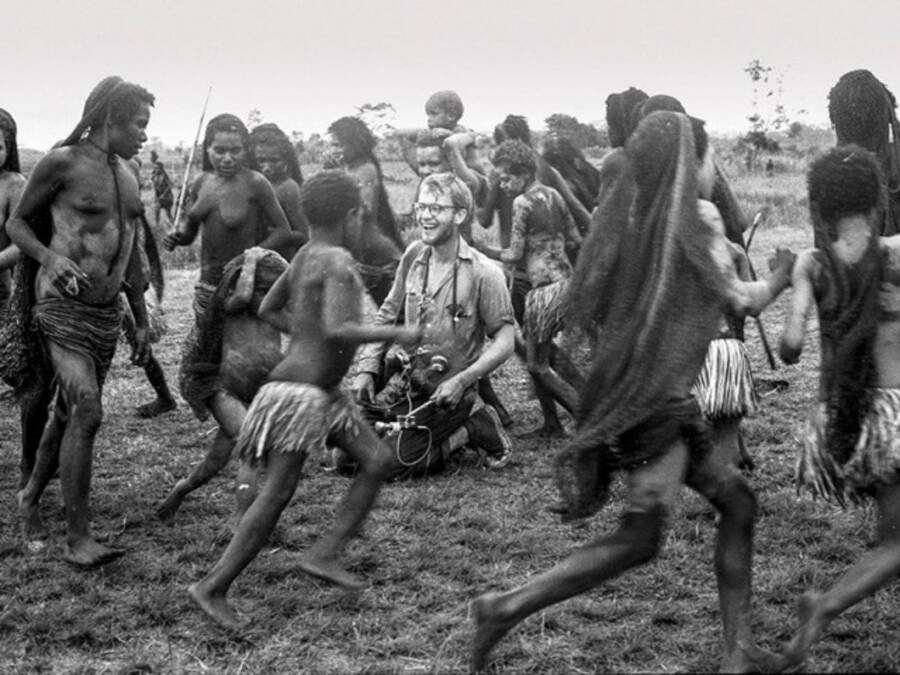
Michael Rockefeller, a member of the prominent Rockefeller family, disappeared in November 1961 during an expedition in the Asmat region of southwestern Netherlands New Guinea, now part of Indonesia’s South Papua province. Despite extensive searches, no remains or physical proof of his death have been discovered. Speculation about his fate includes theories of drowning, shark or crocodile attacks, and even cannibalism by local tribespeople, given the presence of headhunting and cannibalistic practices in the area at the time.
In 2014, Carl Hoffman published “Savage Harvest,” a book detailing an inquest into Rockefeller’s disappearance. The book suggests that he was killed by villagers as revenge for previous conflicts, a theory supported by accounts from villagers and tribal elders. However, it remains part of a complex puzzle without definitive proof. Rockefeller’s collection of Asmat artifacts is now part of the Metropolitan Museum of Art in New York City, underscoring his deep engagement with the culture he went to study. His disappearance remains one of the 20th century’s most enduring mysteries, blending elements of adventure, cultural clash, and the unknown.
A Serene End Captured in Time: The Iconic Image of Evelyn McHale
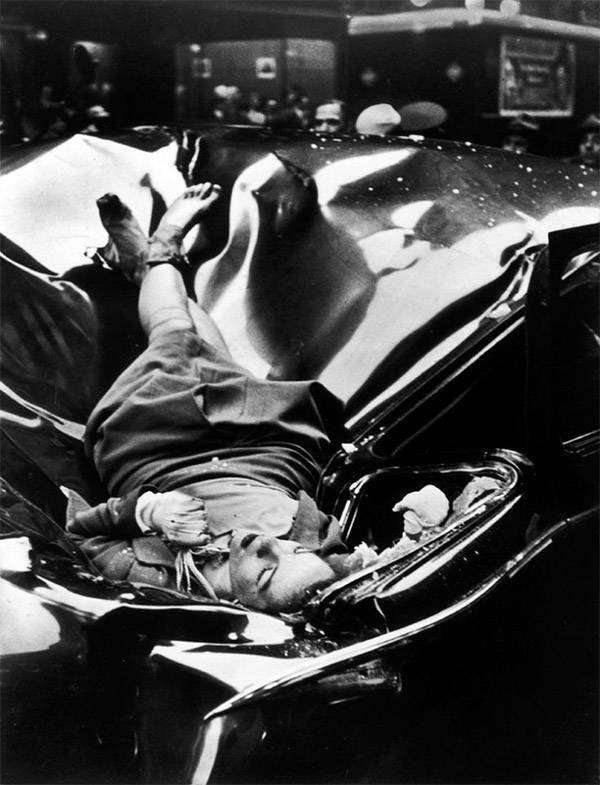
Evelyn McHale’s tragic leap from the Empire State Building on May 1, 1947, resulted in a haunting image that has captivated the world for decades. At just 23 years old, a photography student named Robert Wiles immortalized McHale’s death in a photo capturing her lying atop a crushed car with a serene expression. Time magazine dubbed it “the most beautiful suicide.” Despite her apparent calm in the photograph, McHale’s suicide note revealed deep turmoil. She wished for her body to be cremated and requested her family to avoid any ceremony in her memory, emphasizing her belief that she would not have made a good wife and expressing her fears of inheriting her mother’s depressive tendencies.
The reasons behind McHale’s decision remain a mystery, compounded by her seemingly happy life and upcoming wedding. Her story and the iconic photograph have inspired artists, including Andy Warhol, and have been referenced in various aspects of popular culture, from music videos to album covers. McHale’s death and the subsequent photo challenge our perceptions of beauty, tragedy, and the complexity of human emotions, leaving a lasting impact on society’s collective memory.
The Unfolding of the Stanford Prison Experiment
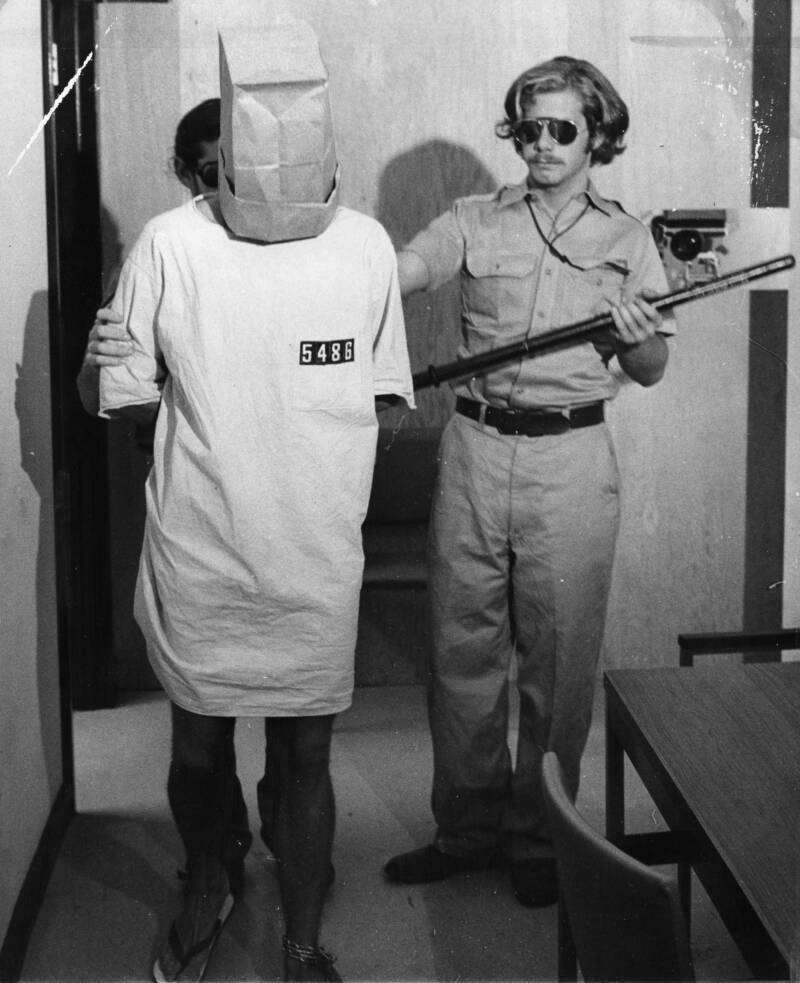
The Stanford Prison Experiment (SPE), conducted in August 1971 by psychology professor Philip Zimbardo, aimed to explore the psychological effects of perceived power by dividing student volunteers into guards and prisoners in a mock prison environment. The experiment, intended to last two weeks, was abruptly halted after just six days due to the extreme and abusive behavior exhibited by the “guards” towards the “prisoners.” This behavior included psychological torture and dehumanizing treatment, which escalated so rapidly that it shocked the researchers.
The SPE has since become a hallmark of social psychology, illustrating how situational forces and perceived power can influence individuals’ behavior. It raised significant ethical questions and led to changes in how psychological experiments involving human subjects are conducted and reviewed. Despite its influence, the experiment has also been heavily criticized for its methodology, ethical implications, and the extent to which it was influenced by the researchers’ expectations. Critics argue that the guards were coerced into acting harshly to fit the expected results, challenging the experiment’s validity. The controversy surrounding the SPE underscores the complex interplay between authority, conformity, and human nature, making it a subject of enduring interest and debate in the study of psychology.
The Horrific Crimes of Joachim Kroll
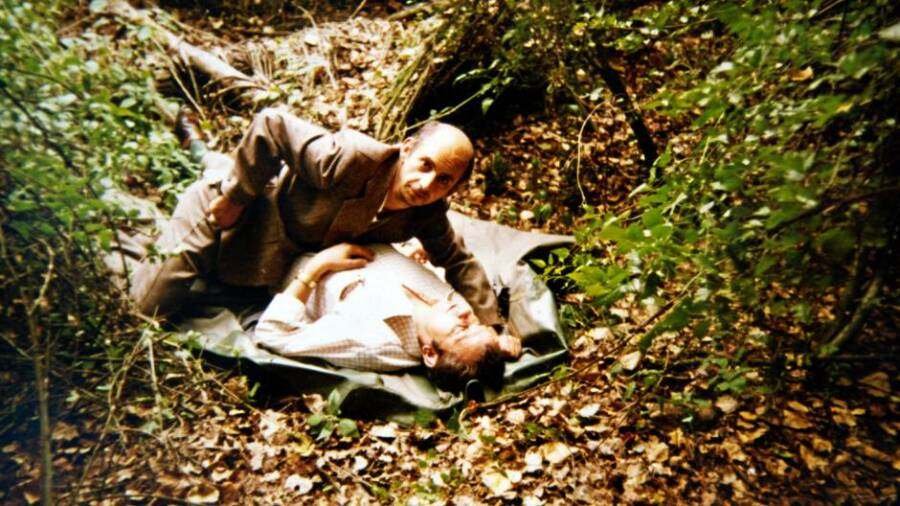
Joachim Kroll, known as the “Ruhr Cannibal,” was a German serial killer whose gruesome acts shocked the nation. Born on April 17, 1933, Kroll’s killing spree spanned over two decades, from 1955 until his arrest on July 3, 1976. He was convicted of eight murders and one attempted murder but confessed to a total of 14. His victims ranged from young children to adults aged 61. Kroll’s method of operation involved strangling his victims, engaging in necrophilia, and then dismembering their bodies to consume their flesh, a horrifying act that he claimed was a means to save on grocery bills.
Kroll’s arrest came after a neighbor reported a blockage in the apartment building’s plumbing, which was found to be caused by human remains. Upon searching Kroll’s apartment, police discovered chilling evidence of his cannibalistic practices, including parts of a body in the refrigerator and a small hand cooking in a pot. This led to his immediate arrest and subsequent life imprisonment sentence in 1982. Kroll died of a heart attack in prison on July 1, 1991.
The photograph taken after his capture, showing Kroll reenacting one of his murders, remains a haunting reminder of the depths of human depravity. Kroll’s case has been extensively documented, serving as a grim study into the mind of a serial killer and the dark capabilities of human nature.
The Final Act of Jack the Ripper
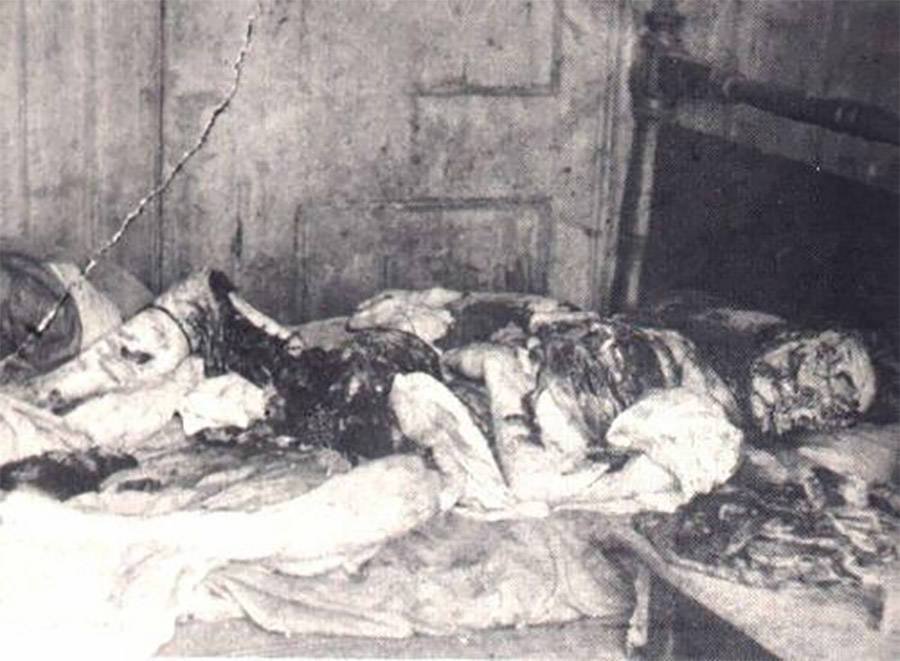
Mary Jane Kelly, believed to be Jack the Ripper’s final victim, was found brutally murdered on November 9, 1888, in her room at 13 Miller’s Court, Spitalfields, London. At about 25 years old, Kelly’s life ended in a small, rented room where she was discovered with her body horrifically mutilated, far beyond the injuries inflicted on the Ripper’s previous victims. Unlike the other victims who were attacked outdoors, Kelly was murdered in the privacy of her own room, allowing the killer an extended period to commit the gruesome act. Her body was extensively mutilated, with the process taking approximately two hours to complete.
Kelly’s early life remains largely undocumented and shrouded in mystery, with many details possibly embellished or fabricated. She was born around 1863 in County Limerick, Ireland, and later moved to Wales with her family. Before her tragic end, Kelly had lived in poverty and worked as a prostitute in London’s East End. Her murder marked the culmination of the Ripper’s notorious killing spree in the Whitechapel and Spitalfields districts, leaving a legacy of fear and mystery that persists to this day.
The discovery of Kelly’s body was made by Thomas Bowyer, sent by her landlord to collect overdue rent. The scene he encountered was one of unparalleled horror, signaling a violent end to the Ripper’s series of murders. Despite extensive investigations, Jack the Ripper was never caught, and the identity of this infamous serial killer remains one of history’s greatest unsolved mysteries. Mary Jane Kelly’s murder is a chilling reminder of the dark capabilities of human nature and the enduring fascination with one of London’s most notorious killers.
The Haunting of the Amityville House
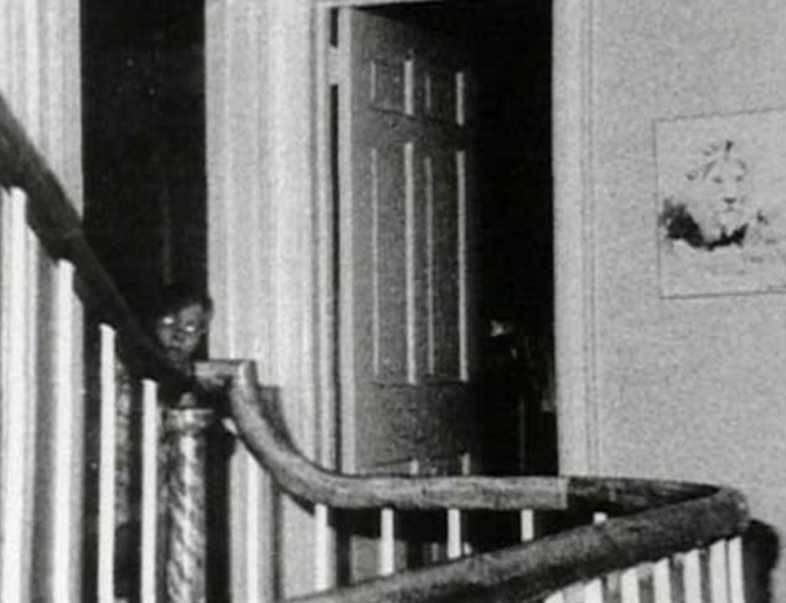
The Amityville Horror story, rooted in the tragic DeFeo family murders in 1974, has captivated the public’s imagination with tales of paranormal activity. In December 1975, George and Kathy Lutz moved into the Amityville house and reported experiencing terrifying phenomena, leading them to flee after just 28 days. Jay Anson’s 1977 book, based on their experiences, spawned a series of films and further investigations into the reported paranormal activities at the house.
One of the most chilling pieces of evidence from the Amityville case is a photograph captured by Gene Campbell, a member of a team led by paranormal investigators Ed and Lorraine Warren. During an investigation on the night of March 6, 1976, an automatic camera set up on the second floor captured an image of what appears to be a young boy with glowing eyes, peering out from one of the rooms. This photograph, which did not emerge into the public domain until 1979, has been the subject of much speculation. Some believe the image to be that of John DeFeo, one of the children murdered by Ronald DeFeo Jr. in the house years earlier.
The authenticity and origins of the “Amityville Ghost Boy” photo remain a topic of debate. The Warrens and other investigators have suggested that the house is haunted by malevolent spirits due to its tragic history. However, the story of the Amityville Horror, including the ghost boy photo, has been met with skepticism and controversy over its truthfulness. Despite this, the image remains one of the most iconic and unsettling photographs associated with the Amityville story, contributing to its legacy as one of the most famous haunted house tales in American history.
The Lasting Echoes of History’s Creepiest Images
As we close the book on these chilling tales and their creepy photos, we’re struck by a realization. There’s a fine line between what we know and what remains hidden. Between what’s visible and what lurks in the shadows. These stories, steeped in history and the depths of the human mind, prompt us to question. To ponder. And maybe, to fear.
Have you seen the Haunted Objects That Found Their Way Into Human Hands?

